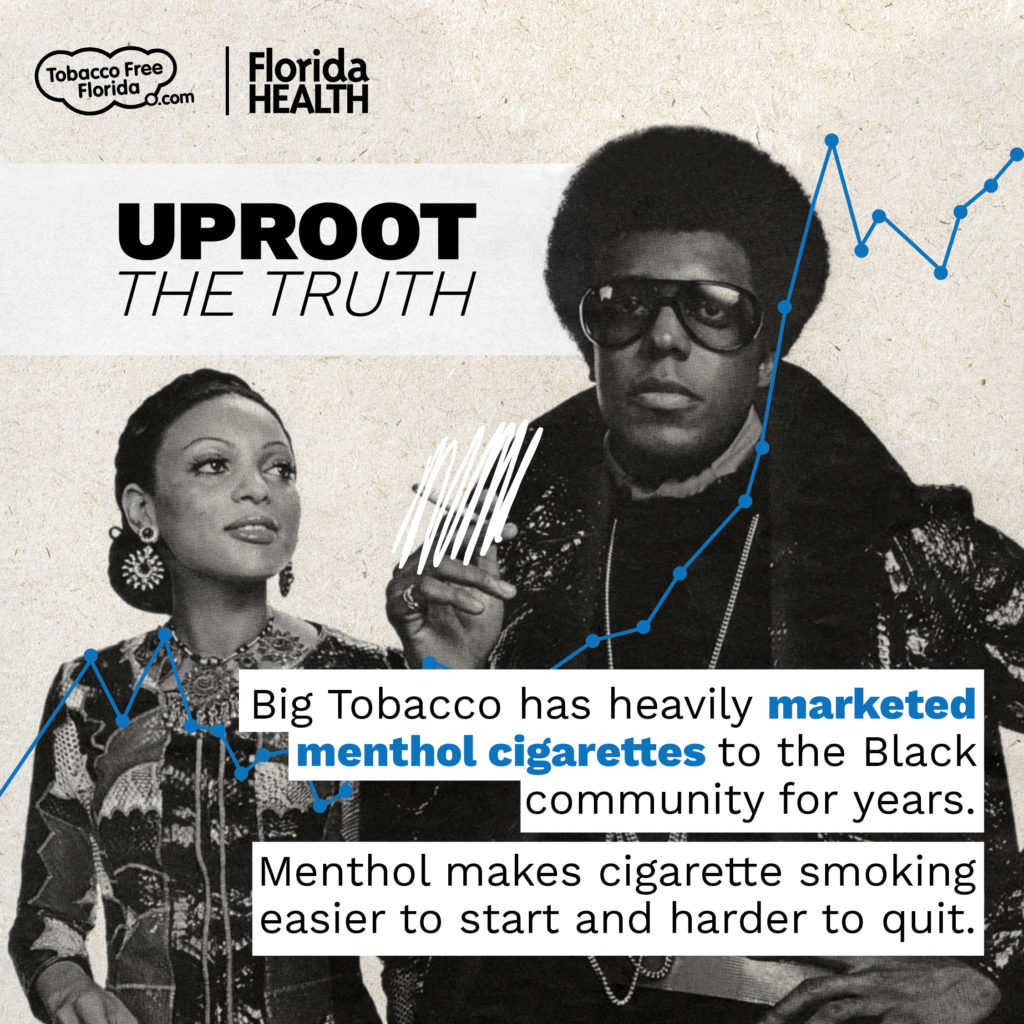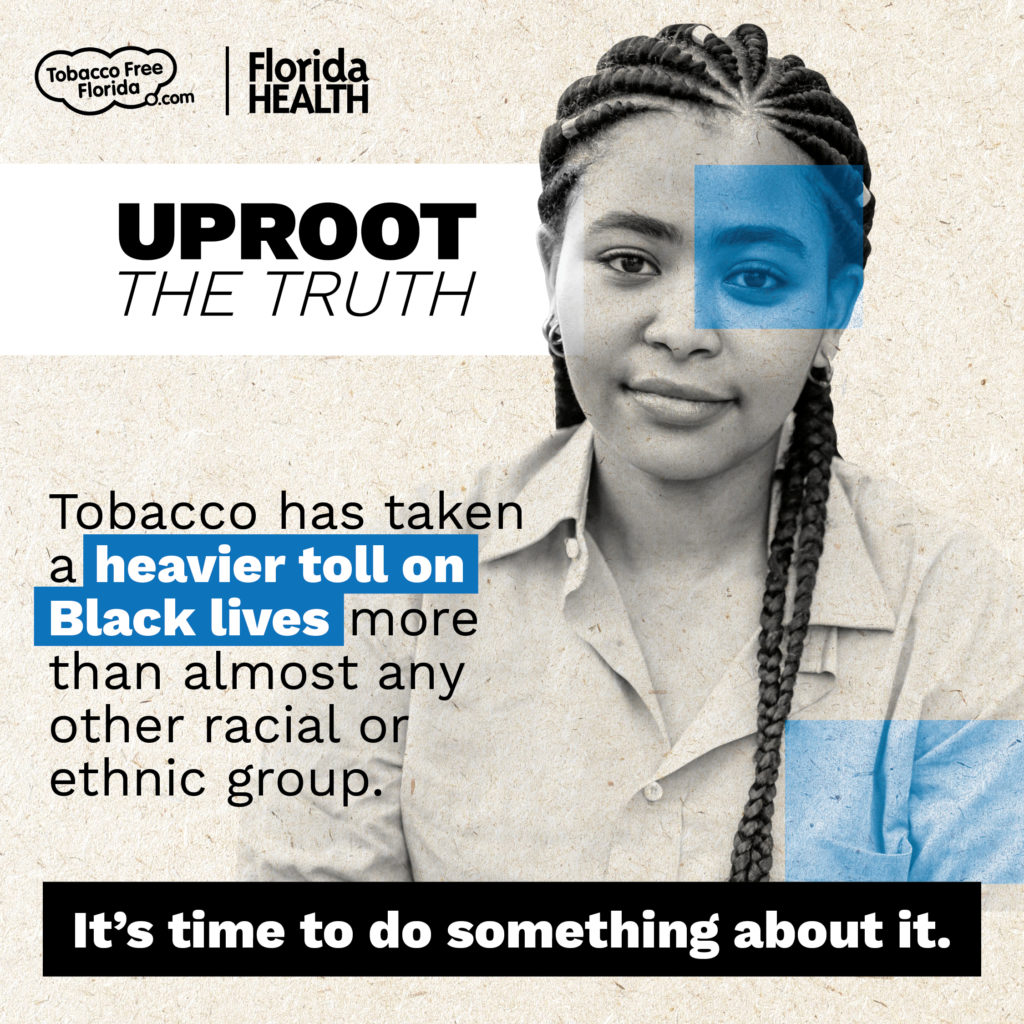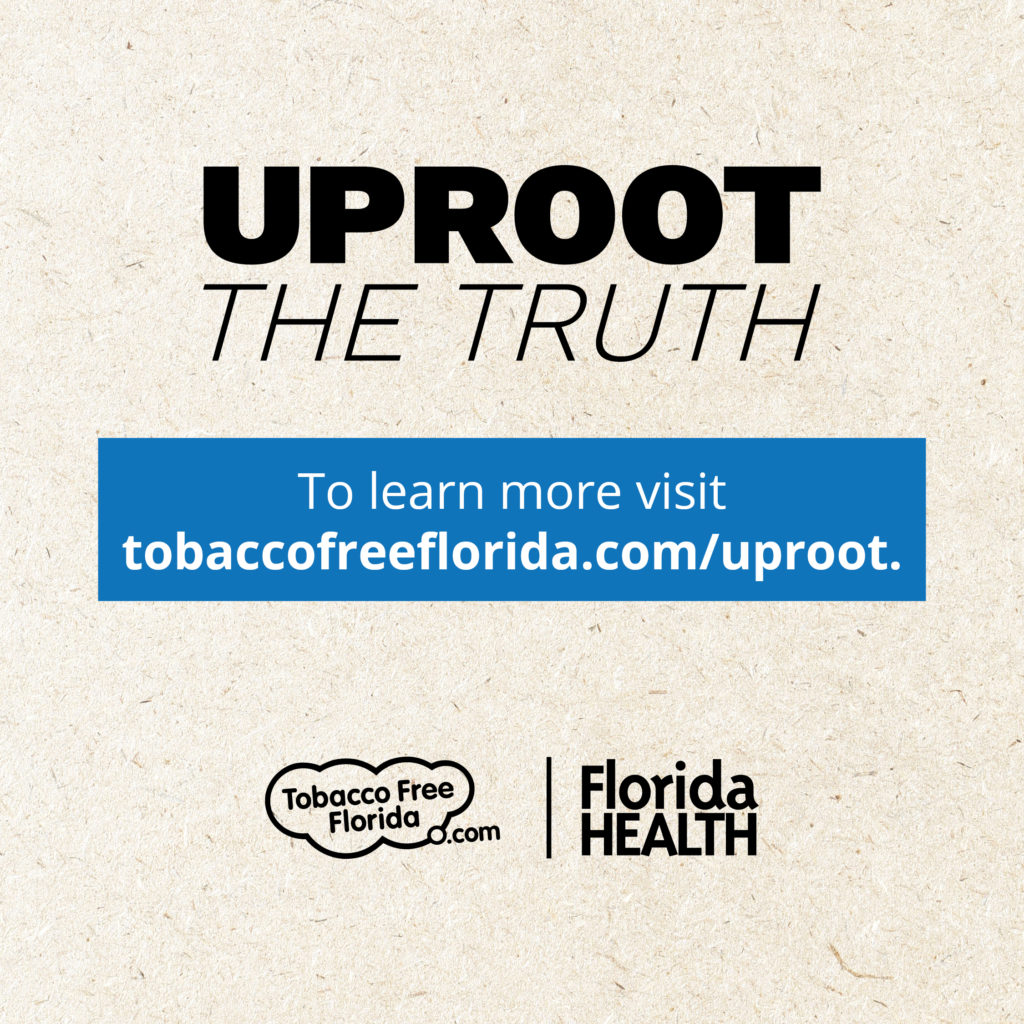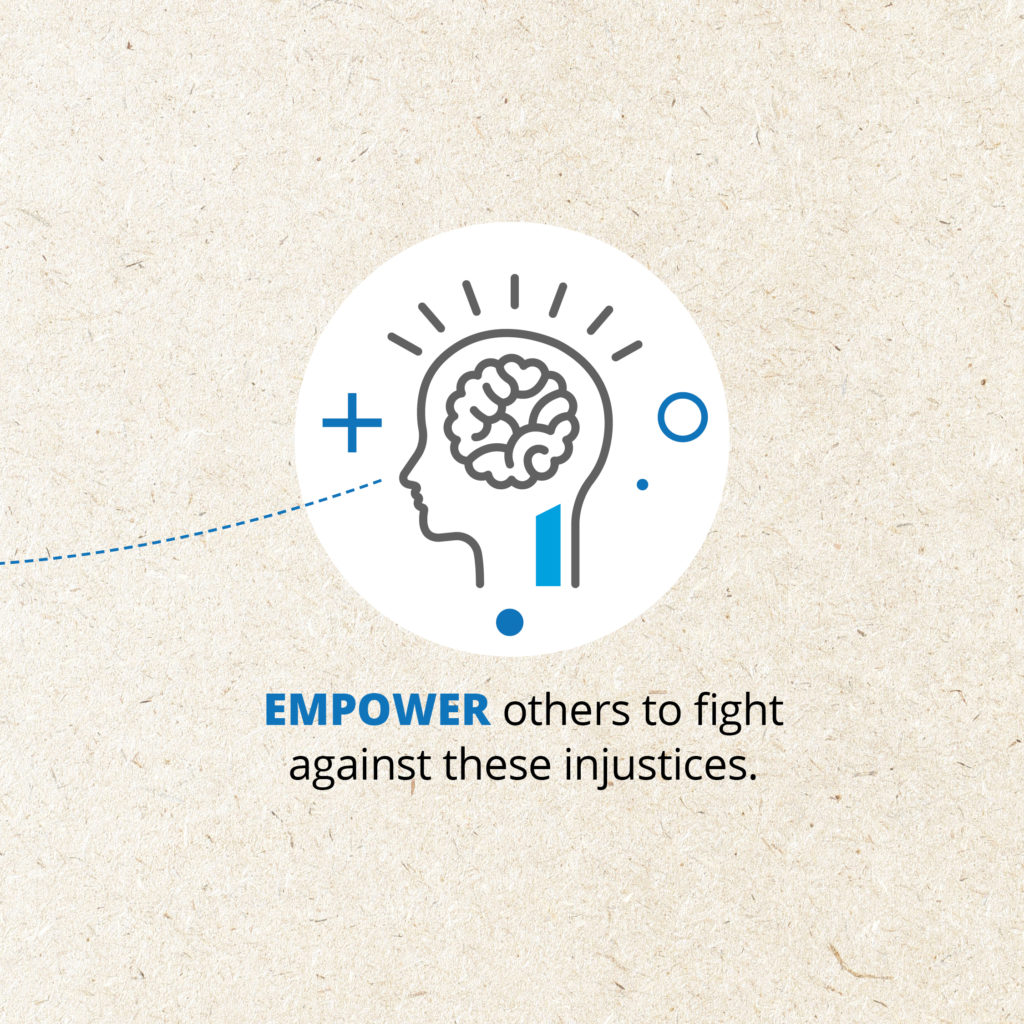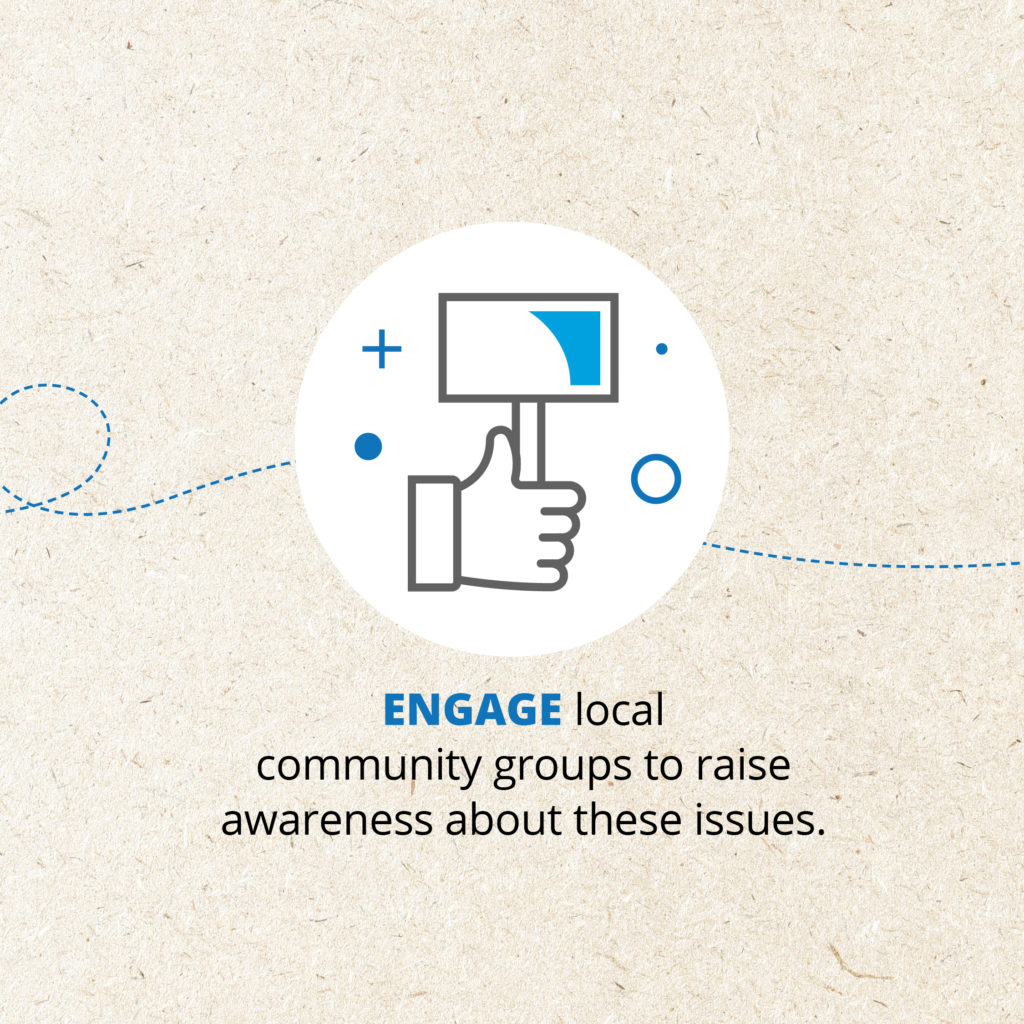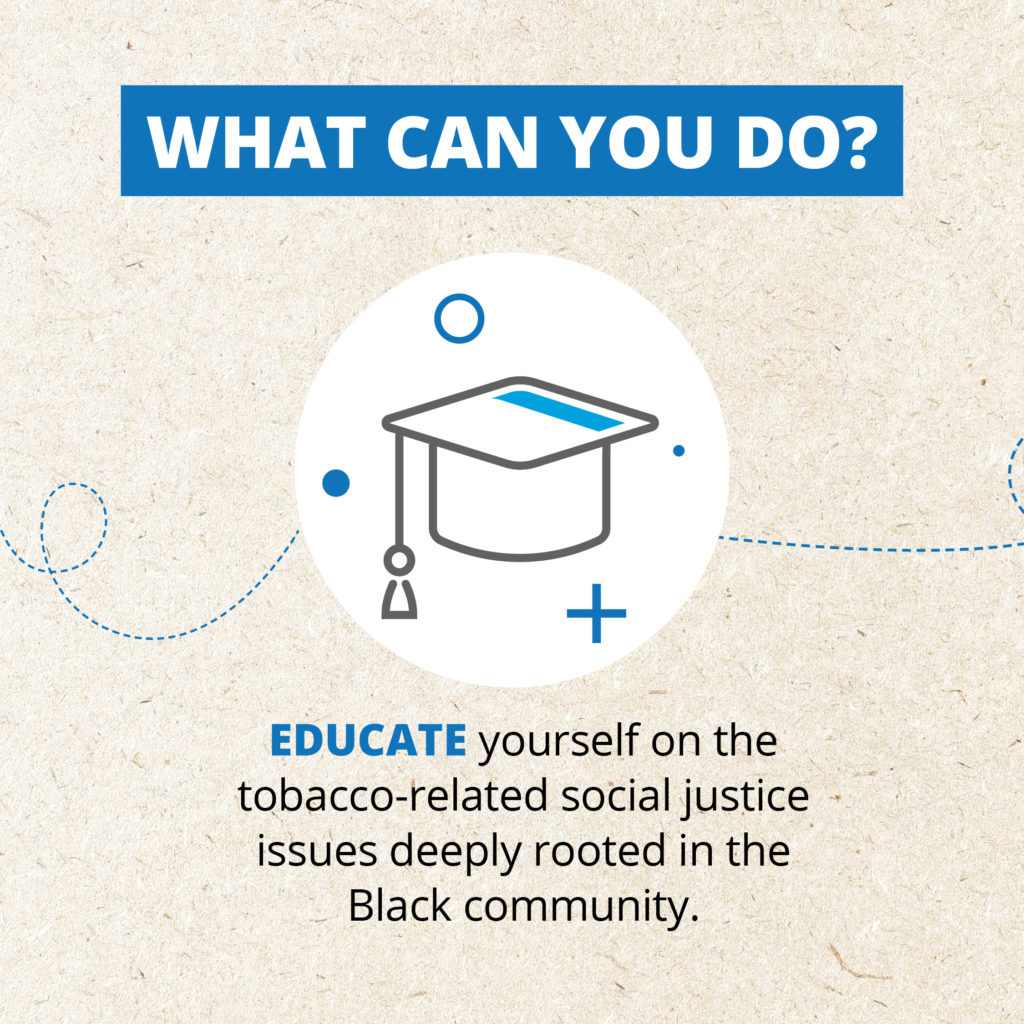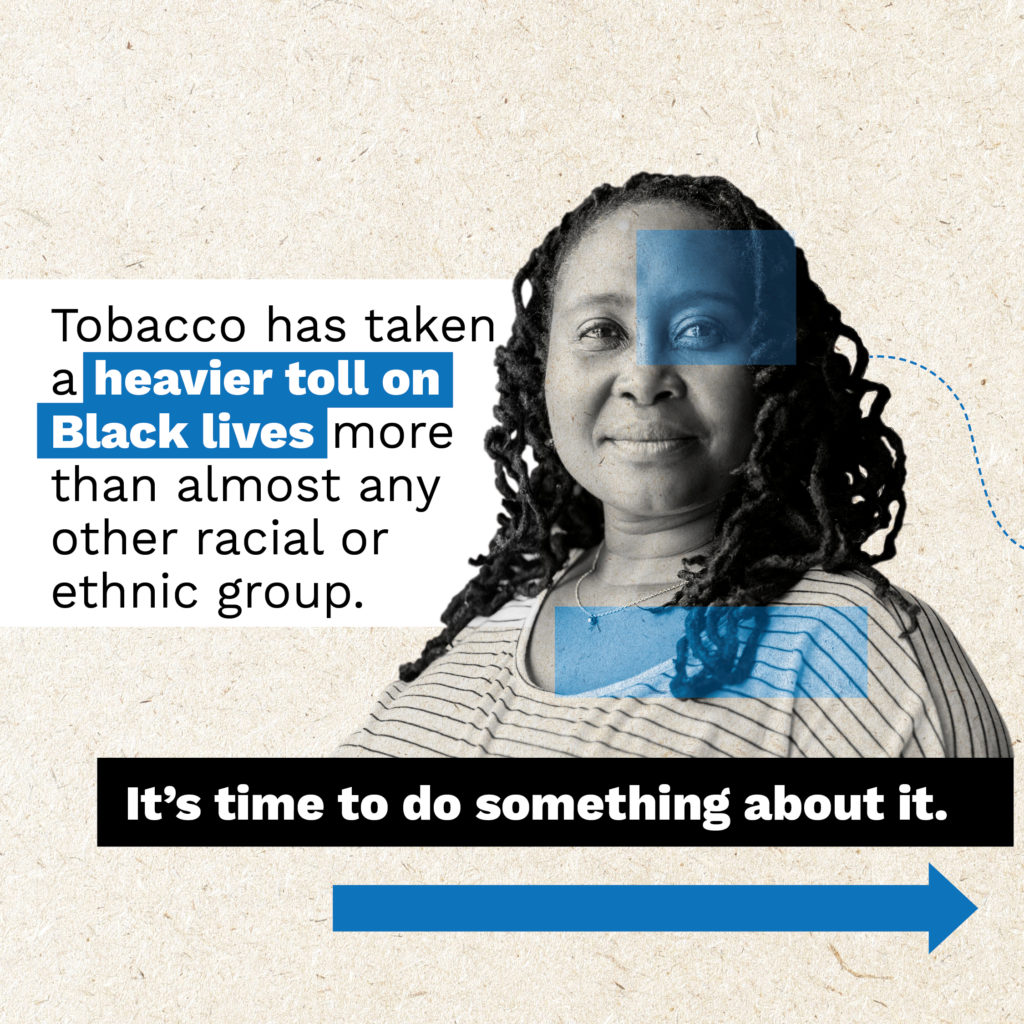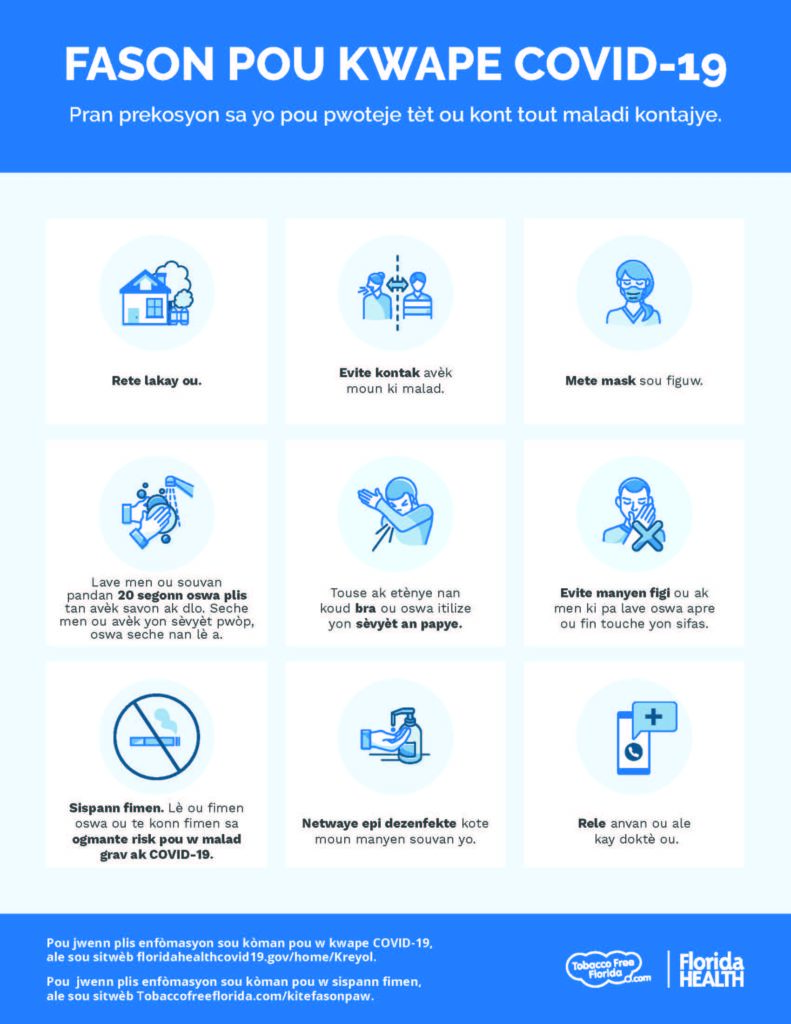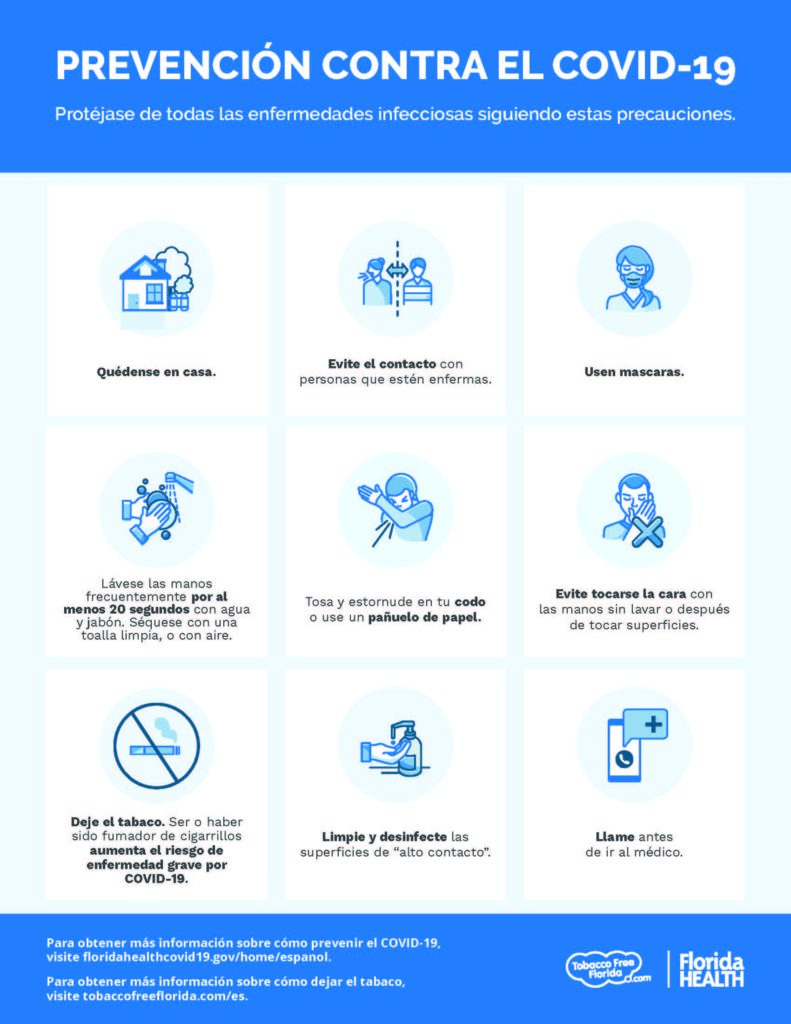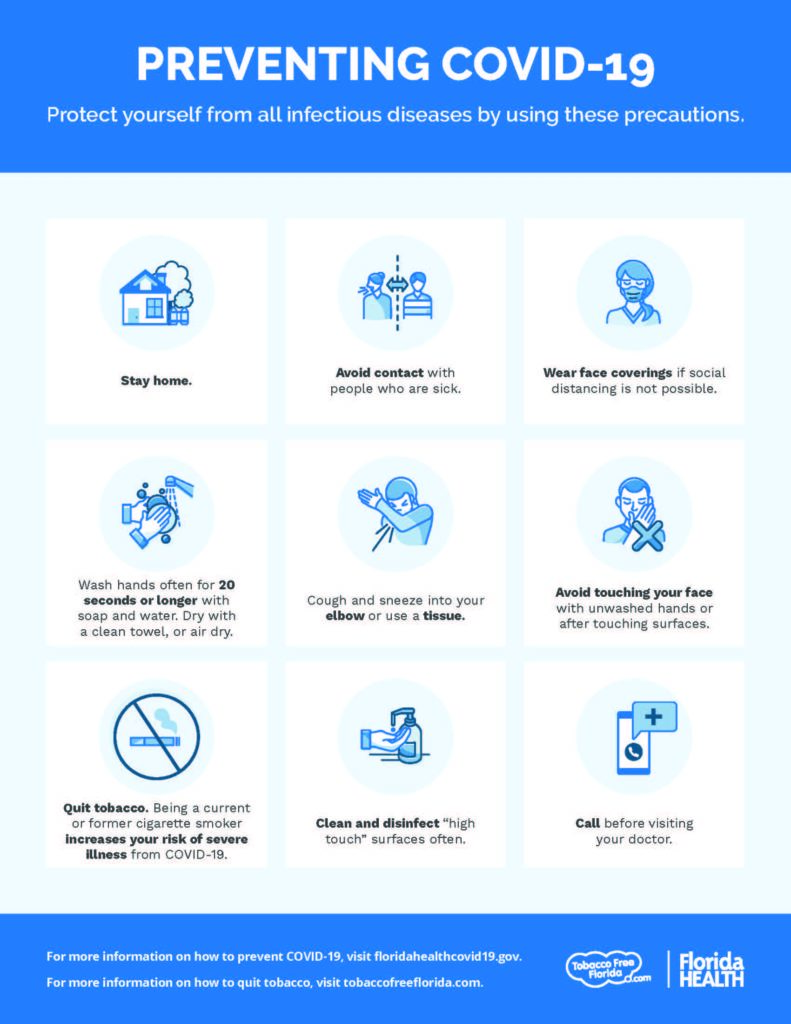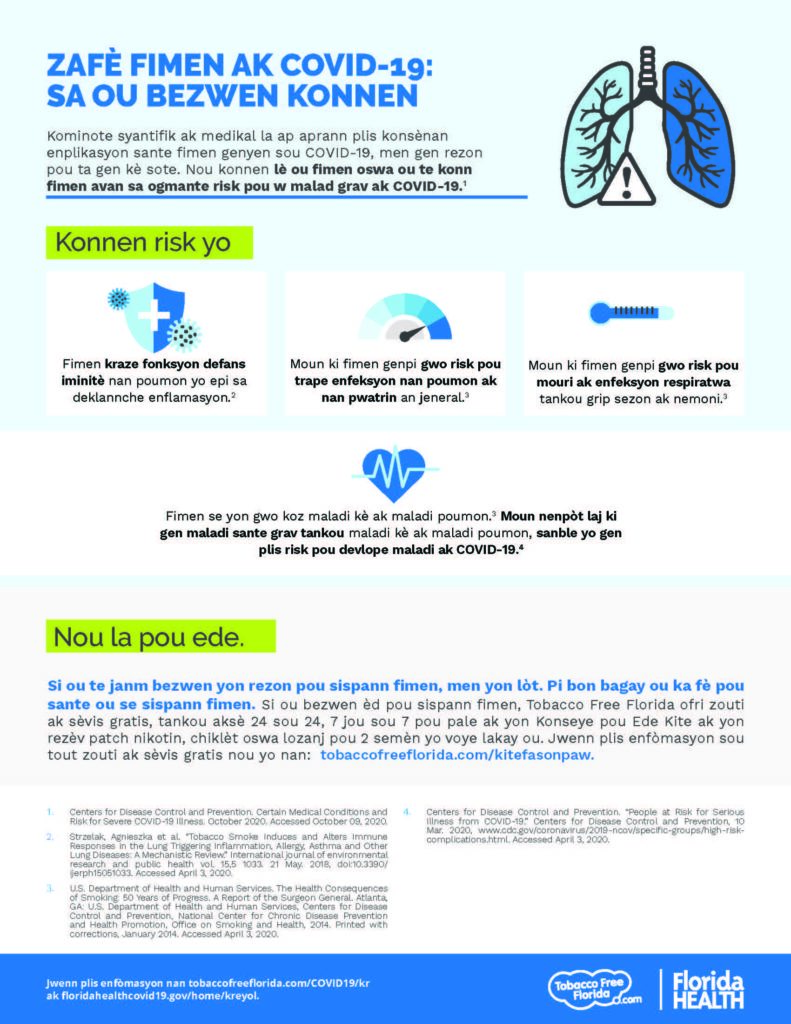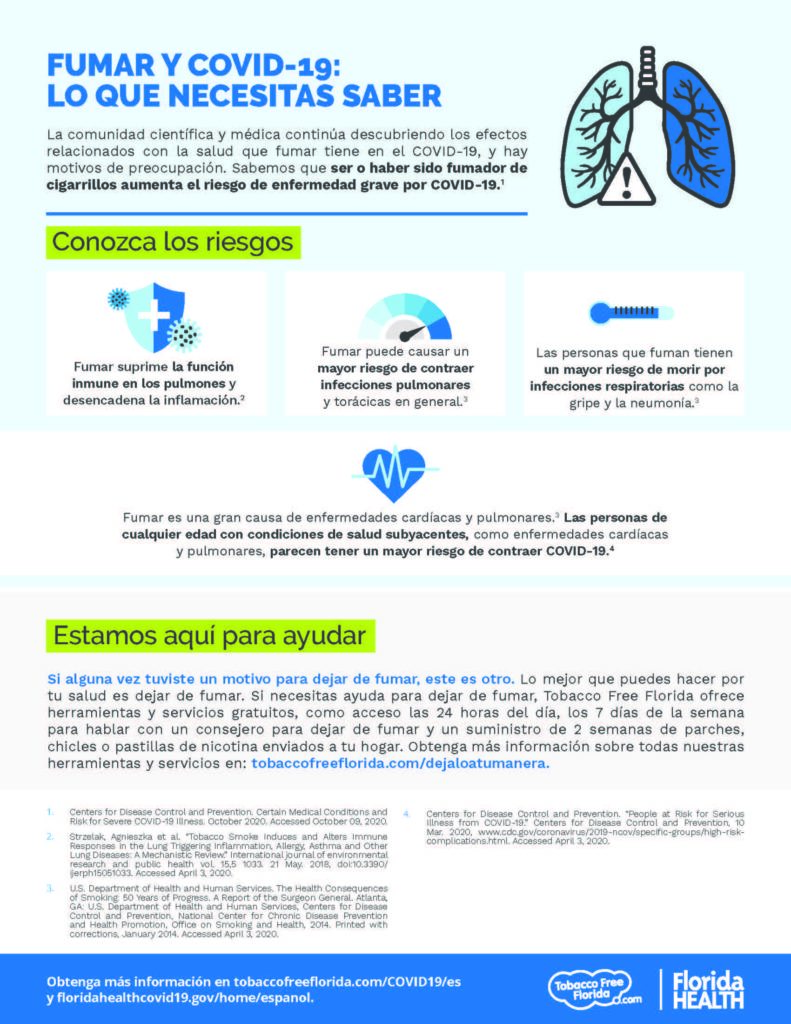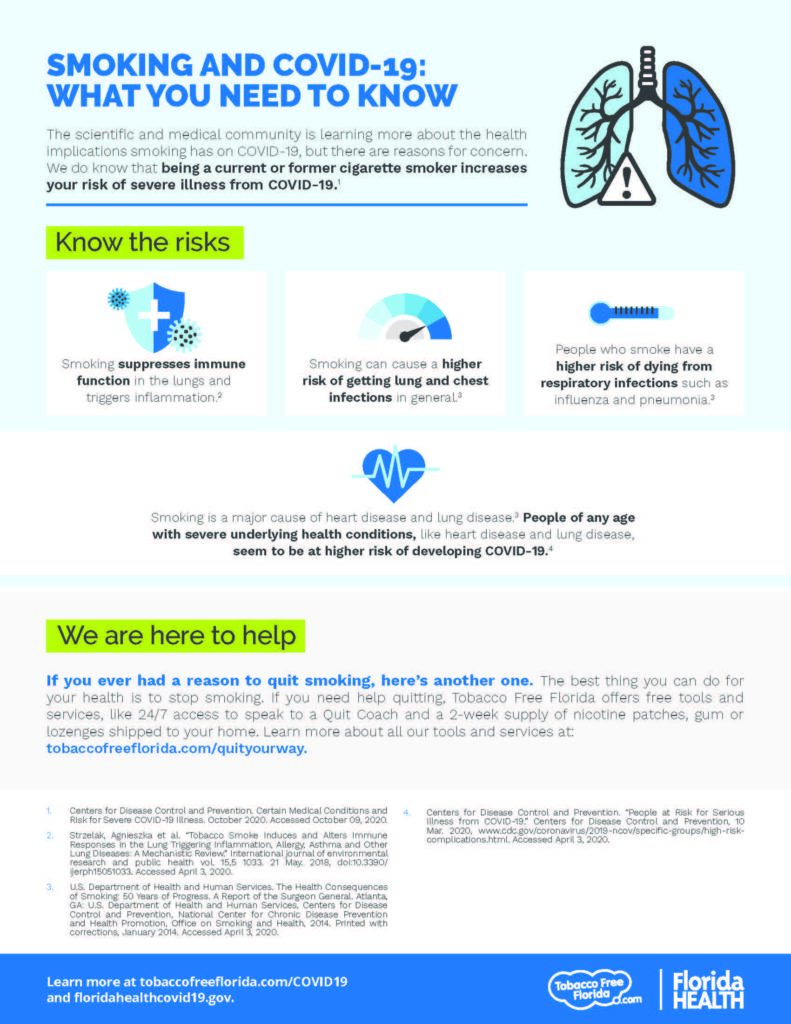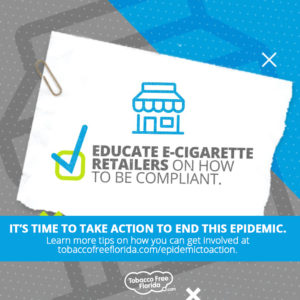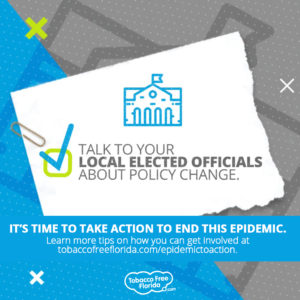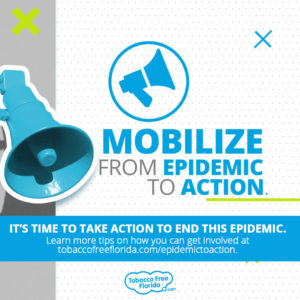Smoke and Tobacco Free Colleges
College campuses across Florida are going tobacco free, becoming healthier places to learn and prepare for success. Smokefree campuses reduce exposure to secondhand smoke, prevent tobacco use initiation, and increase smokers’ efforts to quit smoking. 1, 2, 3
Why Go Tobacco Free?
Tobacco free campus policies protect students, faculty and staff from secondhand smoke, which contains more than 7,000 chemicals and increases a nonsmoker’s risk of cancer, heart disease and stroke. 4, 5, 6 Smoking as young adults often leads to a lifetime of addiction, resulting in tobacco-related disease and premature death. 7 Every day in the United States, more than 2,500 youth and young adults who are occasional smokers will become regular smokers. 8
There are also environmental benefits of going smokefree. Only one out of 10 cigarettes smoked is properly deposited. 9 In fact, cigarette butts are the most littered item in the world and make up 1.69 billion pounds of toxic litter each year. 10 Meanwhile, one study found that campuses with 100% smokefree policies had 77% fewer cigarette butts. 11
It is now common for campuses to be smokefree. At least 2,375 colleges and universities in the U.S. have 100% smokefree campuses; 2,009 of those are tobacco free, 1,986 prohibit e-cigarette use, and 1,019 prohibit hookah use. 12 Having a tobacco free policy can create a marketing and recruiting advantage, as most students prefer tobacco free campuses. 13 A survey conducted by the Student Government Association at Florida State University found that 75.6% of students supported implementing a tobacco free campus. 14
Types of Policies
A 100% smokefree policy bans the use of conventional cigarettes on campus grounds, parking lots, college-sponsored off-campus events and campus-owned vehicles. Tobacco free policies are similar but prohibit the use of any tobacco product. Policies typically apply to students, faculty, employees and visitors. It is important to include emerging tobacco products, like e-cigarettes, in these policies. Youth use of e-cigarettes is a nationwide epidemic. Furthermore, use of these products can create policy confusion and allow smokers to use nicotine in places where smoking is banned. 15
Advocacy
In Florida, 41 college and university campuses have taken the bold step to enact 100% smokefree campus policies. To see a complete list, click here. If you need help making your community smokefree, click here.
1 U.S. Department of Health and Human Services. The Health Consequences of Smoking: 50 Years of Progress. A Report of the Surgeon General. Atlanta, GA: U.S. Department of Health and Human Services, Centers for Disease Control and Prevention, National Center for Chronic Disease Prevention and Health Promotion, Office on Smoking and Health, 2014.
2 U.S. Department of Health and Human Services. Preventing Tobacco Use Among Youth and Young Adults: A Report of the Surgeon General. Atlanta, GA: U.S. Department of Health and Human Services, Centers for Disease Control and Prevention, National Center for Chronic Disease Prevention and Health Promotion, Office on Smoking and Health, 2012.
3 William V. Lechner MS , Ellen Meier MS , Mary Beth Miller MS , Josh L. Wiener PhD & Yvon Fils-Aime MD (2012): Changes in Smoking Prevalence, Attitudes, and Beliefs Over 4 Years Following a Campus-Wide Anti-tobacco Intervention, Journal of American College Health, 60:7, 505-511.
4 Centers for Disease Control and Prevention (US); National Center for Chronic Disease Prevention and Health Promotion (US); Office on Smoking and Health (US). How Tobacco Smoke Causes Disease: The Biology and Behavioral Basis for Smoking-Attributable Disease: A Report of the Surgeon General. Atlanta (GA): Centers for Disease Control and Prevention (US); 2010.
5 U.S. Department of Health and Human Services. Let’s Make the Next Generation Tobacco-Free: Your Guide to the 50th Anniversary Surgeon General’s Report on Smoking and Healthpdf iconexternal icon. [PDF–795 KB] Atlanta: U.S. Department of Health and Human Services, Centers for Disease Control and Prevention, National Center for Chronic Disease Prevention and Health Promotion, Office on Smoking and Health, 2014.
6 U.S. Department of Health and Human Services. The Health Consequences of Smoking—50 Years of Progress: A Report of the Surgeon General. Atlanta: U.S. Department of Health and Human Services, Centers for Disease Control and Prevention, National Center for Chronic Disease Prevention and Health Promotion, Office on Smoking and Health, 2014.
7 U.S. Department of Health and Human Services. Preventing Tobacco Use Among Youth and Young Adults: A Report of the Surgeon General. Atlanta, GA: U.S. Department of Health and Human Services, Centers for Disease Control and Prevention, National Center for Chronic Disease Prevention and Health Promotion, Office on Smoking and Health, 2012.
8 U.S. Department of Health and Human Services. Preventing Tobacco Use Among Youth andYoung Adults: A Report of the Surgeon General. Atlanta, GA: U.S. Department of Health and Human Services, Centers for Disease Control and Prevention, National Center for Chronic Disease Prevention and Health Promotion, Office on Smoking and Health, 2012.
9 iQ Research & Consulting. Keep America Beautiful Pocket Ashtray Study, January 2008 – See more at: https://tobaccofreeflorida.com/current-issues/tobacco-free-beaches-and-parks-the-issue/#sthash.hbpvmNQw.dpuf.
10 Novotny, Thomas E., Kristen Lum, Elizabeth Smith, Vivian Wang, and Richard20 Barnes. “Cigarettes Butts and the Case for an Environmental Policy on Hazardous Cigarette Waste.” International Journal of Environmental Research and Public Health. Molecular Diversity Preservation International (MDPI), 20 May 2009. Web. 27 July 2015. <https://www.ncbi.nlm.nih.gov/pmc/articles/PMC2697937/>.
11 Seo, D. C., Macy, J. T., Torabi, M. R., & Middlestadt, S. E. (2011). The effect of a smoke-free campus policy on college students’ smoking behaviors and attitudes. Preventive medicine, 53(4), 347-352.
12 American Nonsmokers’ Rights Foundation. “Smokefree and Tobacco-Free U.S. and Tribal Colleges and Universities.” 1 Jul 2019. https://no-smoke.org/pdf/smokefreecollegesuniversities.pdf.
13 Smoke Free Oregon. “Making Your College Campus Tobacco free.” Parenting Handout (2005): n. pag. Web. 16 July 2015. <https://tobaccofreecampus.org/sites/default/files/resources/Oregon%20Guide.pdf>.
14 Baig, Setareh. “Students Debate Smoke-free Campus.” Tallahassee Democrat. N.p., 24 Apr. 2013. Web. 20 Aug. 2015.
15 Americans for Nonsmokers’ Rights (ANR). Model Ordinance Prohibiting Smoking in All Workplaces and Public Places (100% Smokefree). https://no-smoke.org/pdf/modelordinance.pdf.



